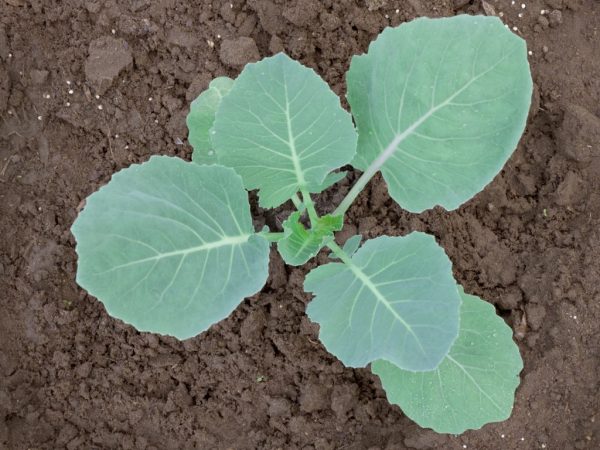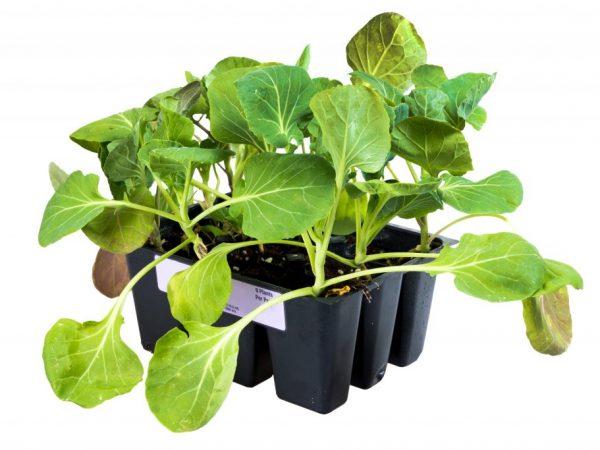Causes of purple leaves in cabbage
Cabbage is not picky about care. But there are times when cabbage has purple leaves, and there may be several reasons for this.

Causes of purple leaves in cabbage
Causes
If the leaves of the cabbage turn blue, then this indicates the presence of problems that are associated with mistakes in the care of the vegetable crop.
Lack of phosphorus
This is the main reason the leaves turn purple. At first, only veins acquire a purple hue. But over time, all other parts of the plant become the same, gradually moving towards the central part of the head. If at this stage you do not start to deal with the problem, then the edges of the leaves will turn yellow and begin to fall off.
Pest defeat
The appearance of pests in the soil or greenhouse makes it possible to understand why cabbage seedlings turn blue. Vegetable crops can be affected by fungal diseases, which are difficult to get rid of. The purple color on the leaves appears after the black leg - the pathogen that is in the soil. Usually affects Peking and white cabbage varieties.
Stress
Seedlings are often stressed during transplanting. Changes in growing conditions, weather, temperature are the main factors why cabbage leaves turn blue.
They turn purple gradually, and often only half of the head of cabbage acquires such a shade. But if young heads of cabbage have turned blue, then there is nothing to worry about. After 2-3 weeks of quality care, the plant will recover and turn green again.
If the purple color appears on adult heads of cabbage, then there may be several reasons:
- abundant watering, as a result of which the land became waterlogged;
- hypothermia, which occurs as a result of the lack of a hardening procedure;
- land untreated before planting plants.
It is really possible to save such a vegetable crop. Folk remedies and fungicides help.
Remedies
When cabbage leaves turn blue, there are many ways to fix the problem. They depend on the reason for the appearance of a purple hue on the heads of cabbage.
Lack of micronutrients
In this case, you need to increase the amount of phosphorus supplements. This trace element stimulates the growth of young seedlings and adult plants. It also improves metabolic processes.
Superphosphate

Watering with superphosphate will solve the problem
You can use both regular superphosphate and double. The difference between them is in the concentration of phosphorus.
It is best to make a liquid solution. For him, take 100 g of superphosphate, which are bred in a bucket of water. 0.5-0.7 l of solution is applied under one plant. If you need to add double superphosphate, you need 35-50 g per 1 m2.
Bone meal
Another component is bone meal, which also contains a large amount of phosphorus. For this vegetable culture, take 1 teaspoon of the product, which is diluted in 1 liter of water. The solution should be infused for several hours before adding so that the flour is completely dissolved.
Organic
An effective and proven folk remedy is a fertilizer based on manure, droppings or other organic matter. 3-5 kg of manure are applied per 1 m2.This will completely provide the vegetable crop with phosphorus and help get rid of the purple color of the cabbage leaves.
Stress
The treatment is carried out according to the specific reason that caused the stressful situation for the cabbage:
| Cause | Method of treatment |
| Freezing when changing growing conditions | The plant should be insulated. Covering the culture with special materials - spunbond or agrofibre - will help with this. Seedlings or seedbeds are covered with white agrofibre. The material will allow the vegetable crop to withstand frosts down to -10 ° C. Perfectly protects plantings from wind, hail and snow. Another way is mulching. Rotted grass, straw, branches of fruit trees, mulch paper and other materials are used as mulch. |
| Dry soil | Carry out abundant watering. Use 2-3 liters of water for 1 head of cabbage. |
| Waterlogging of the soil | This is a frequent occurrence during periods of heavy rainfall. Then it is better to stop additional watering altogether. After the rains stop, you need to create special conditions for the evaporation of excess moisture. To do this, destroy the soil crust and loosen the soil. If there is too much water, grooves are made. They are placed between the rows to drain excess water. |
Influence of pests and diseases

The disease must be fought
If the black leg does not hit the plant much (small dark or black spots have appeared), then a special solution will help. It is made with 1-% potassium permanganate, that is, potassium permanganate. Take 1 g of potassium permanganate. After that, this amount of trace element is diluted in 100-150 ml of water.
The manganese solution must be infused for 5-7 hours. It must be applied at the root of the head of cabbage. If the vegetable crop is very strongly affected, then the entire head of cabbage can be sprayed using the drip irrigation method. Consumption rate - 1 liter per 1 plant.
If the black leg has struck the vegetable crop so much that the entire head of cabbage has become purple, then the treatment should be carried out on the basis of Fundazol or Planriz. The first drug is taken in an amount of 15-20 g. This amount is diluted in 1 bucket of water. For 1 planting, 1 liter of solution is enough. Do foliar feeding. To do this, you need a dropper dispenser. Only affected leaves can be sprayed!
Fungicide "Planrizom" is taken in the amount of 35-50 ml. Then they are diluted in warm, slightly warmed up water. Water needs 10 liters (1 bucket). Introduce in the same way as Fundazol.
Another solution is to add a solution based on colloidal sulfur. You will need 10 g of a trace element, which are diluted in 10 liters of water. This is enough for processing 7-8 plants.
If after 1-2 weeks there is no improvement in the condition of the heads of cabbage, they need to be dug up and burned. The soil where the vegetables grew is replaced with a healthy one (if not all, then at least the top layer in the amount of 20 cm) or the old one is treated with a soda solution. For this, 2 tsp. soda is diluted in 1 liter of water. Another way is treatment with manganese solution.
Prophylaxis
Variety selection
First, you need to choose the right variety of cabbage. The climatic and weather conditions inherent in a particular region where the vegetable crop will be grown are taken into account. Usually, varieties are chosen that are resistant to waterlogging, frost.
Soil selection
The next step is soil selection. This vegetable crop does not grow well in acidic soils. Loamy, sandy and clayey soil types are suitable. If it is not possible to replace the acidic soil, it must be lime before planting a vegetable crop.
Care
The basic rule is to provide appropriate care:
- Top dressing on time. This applies not only to phosphorus seedlings, but also to the entire spectrum of organic and mineral fertilizers.
- Inspect the plants at least once a week. This will allow early detection of symptoms of the disease and prevent the appearance of purple leaves. Another option is to see the beginning of the development of the problem and react quickly.
- Tempering is carried out. Although most varieties of cabbage are resistant to temperature extremes, young sprouts are always very vulnerable.Gradually, the seedlings are taken outside, where the air temperature should not be lower than 15 ° C. At first, the plantings are left to stand for 3-4 hours, but over time, the duration of the stay is increased. It is very important that at this time there is no rain or strong wind outside.
- Compliance with the level of humidity and temperature in the room where young seedlings are grown, or in the greenhouse. The temperature should be in the range of 20-25 ° C, humidity - up to 80%.
- Regular watering. They are guided by the condition of the soil - if it is dry, watered, if it is wet, not. On average, the optimal frequency of watering is 2-3 times a week in an amount of 0.5 liters for young shoots and 1 liter for adult plants.
Conclusion
If it so happens that the cabbage has purple leaves, then you first need to determine the cause. There are several of them: defeat by a black leg, lack of phosphorus, freezing of seedlings. You can fight with folk methods or with the help of fungicides.


